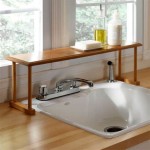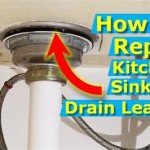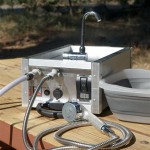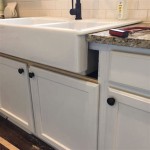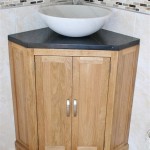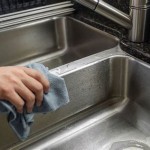Replacing a Soap Dispenser Pump in Your Kitchen Sink
A convenient addition to any modern kitchen, a soap dispenser pump built into the sink eliminates the need for bulky bottles on the counter. However, like any mechanical device, these pumps can malfunction over time. When this happens, replacing the pump is a straightforward DIY project that can restore functionality to your sink. This article will guide you through the process of replacing a soap dispenser pump in your kitchen sink, providing clear instructions and important considerations for a successful replacement.
Understanding the Pump and Its Components
Before embarking on the replacement process, it's essential to understand the components of a soap dispenser pump and their function. The pump itself is typically housed within a cylindrical unit that is attached to the sink. It consists of a motor, a piston, and a valve system. The motor drives the piston, which pushes the soap solution through the valve into the dispensing nozzle. The valve controls the flow of soap and prevents leakage. Additionally, a tubing system connects the pump to the soap reservoir, often a bottle placed within a cabinet below the sink.
Identifying the Source of the Problem
Before assuming that the pump needs replacement, it's crucial to identify the source of the problem. Here are some common issues and their potential solutions:
- No soap dispensing: This could be due to a clogged nozzle, an empty soap reservoir, or a malfunctioning pump. Check the nozzle for blockage, refill the reservoir, and test the pump again. If the problem persists, the pump may be faulty.
- Weak soap dispensing: This could indicate a clogged tube, a low soap level, or a worn-out pump. Check the tube for obstructions, refill the reservoir, and observe the dispensing pressure. If the issue persists, the pump might need replacing.
- Leaky pump: This is usually caused by a faulty valve or a worn-out seal. Inspect the valve for damage and replace it if necessary. You can also try tightening the pump unit to see if that resolves the leak.
If you've ruled out other possible causes and believe that the pump itself is faulty, you can proceed with the replacement.
Replacing the Soap Dispenser Pump
The process of replacing a soap dispenser pump varies depending on the specific model and installation method. However, the general steps involved are as follows:
- Turn off the water supply. Locate the shut-off valve for the cold water line supplying the sink and turn it off completely. This prevents water from flowing into the sink while you work.
- Disconnect the soap reservoir. Depending on the type of reservoir, it may be attached to the pump with a hose or connector. Gently detach the reservoir, ensuring that any remaining soap is drained into a container.
- Remove the old pump. Locate the mounting screws or clips holding the pump unit in place. Carefully remove these fasteners, noting their position for easier reassembly.
- Install the new pump. Align the new pump with the mounting holes and secure it using the original screws or clips. Ensure that the pump is level and properly positioned.
- Reconnect the soap reservoir. Attach the soap reservoir to the new pump using the same method as the old unit. Ensure that the connection is tight and secure.
- Turn on the water supply. Carefully turn the cold water supply back on and check for leaks around the pump and reservoir connections.
- Test the new pump. Fill the soap reservoir with the desired soap solution and test the pump by dispensing a small amount of soap. Observe the dispensing pressure and ensure there are no leaks.
After completing the replacement, it's essential to discard the old pump properly, following local recycling guidelines. If you encounter any difficulties during the process, consult the manufacturer's instructions or seek assistance from a qualified plumber.
Choosing the Right Replacement Pump
When selecting a replacement soap dispenser pump, it's crucial to ensure compatibility with your existing sink and soap reservoir. Check the following aspects:
- Pump size and mounting: The replacement pump should fit the existing mounting holes and be compatible with the sink design.
- Soap reservoir connection: Verify that the new pump has the appropriate connector or tubing for your soap reservoir.
- Dispensing pressure: Select a pump with a suitable dispensing pressure for your needs. Consider the viscosity of the soap solution you intend to use.
- Power source: Most pumps are powered by batteries, but some may require an electrical outlet. Ensure that the chosen pump is compatible with your power source.
It's always advisable to purchase a pump from reputable brands known for their quality and durability. Reading customer reviews and comparing prices from different retailers can also help in making an informed decision.

Soap Dispenser Pump For Kitchen Sink W Extension Tube Kit Liquid

Kitchen Sink Soap Dispenser Extension Tube Kit Stainless Steel Countertop Pump

Replacement Soap Pump For Kitchen Sink

Replacement Soap Pump Top For Kitchen Sink

Culp Deck Mounted Kitchen Sink Soap Dispenser 400ml 13 5oz Pump Bras Signature Faucets

Plumbflex Kitchen Sink Stainless Steel Soap Dispenser Built In Design For Counter Top With Large Liquid Bottle Brushed Nickel 1000e The Home

4pcs Soap Dispenser Pump Replacement Stainless Steel Lotion For Regular 28 400 Neck Bottles Bathroom

2pcs Soap Dispenser For Kitchen Sink Brushed Nickel Built In With 350ml Bottle Brass Head And Superior

Soap Dispenser Matsi White Kela

Stainless Steel Soap Dispenser Extension Tube Kit Kitchen Sink Liquid Bathroom Lotion Detergent Hand Press Pumps Fruugo No
